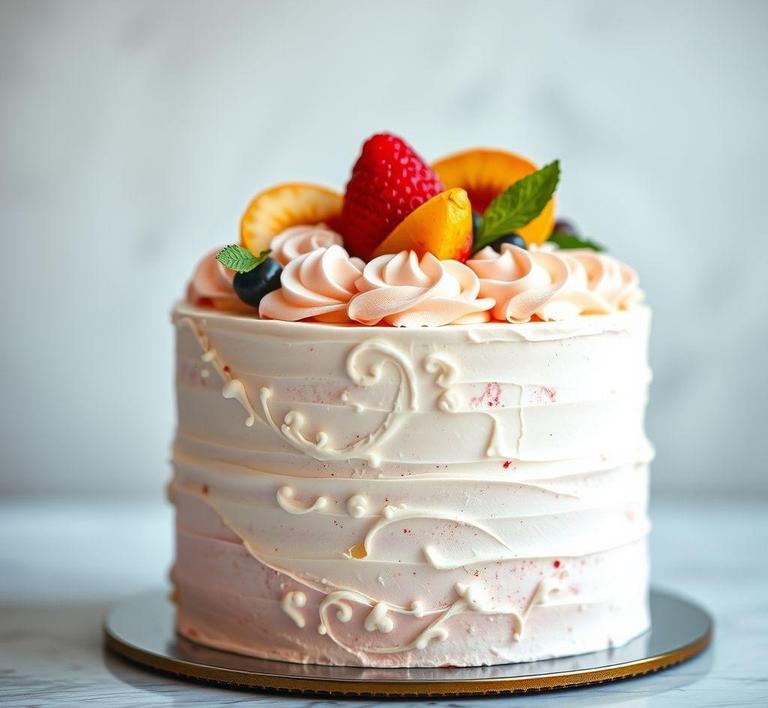Refreezing cake is a trickier topic than you might think, but it’s totally doable with the right approach! Whether you’ve got leftover slices or an entire cake that you want to preserve for later, understanding how to refreeze cake properly can help maintain its flavor and texture. The key is knowing when and how to freeze it initially, how to wrap it up so it doesn’t get freezer burn, and the best way to thaw it afterward. In this guide, we’ll walk you through everything you need to know to refreeze your cake without sacrificing its deliciousness.
Can You Refreeze Cake?

When it comes to storing and preserving baked goods, cake is often one of the more delicate items to handle. But what if you’ve baked too much, or you’re left with half a cake after a celebration? You might be wondering whether you can refreeze cake without compromising its texture or flavor.
The short answer is yes, you can refreeze cake, but with some caveats. Refreezing cake isn’t inherently harmful, but it does depend on how the cake was originally frozen, how it was thawed, and the type of cake you’re dealing with. The key factors that affect whether refreezing will work or not are moisture retention, the cake’s frosting, and the overall quality after freezing and thawing.
Certain cakes, such as those that are particularly rich or dense (think pound cakes, fruit cakes, or chocolate cakes), are more forgiving when it comes to freezing and refreezing. Cakes with a high moisture content or delicate toppings like whipped cream or buttercream, however, may not fare as well when refrozen, as they can become soggy or lose their structural integrity.
The process of freezing and thawing can cause the formation of ice crystals within the cake. These crystals can rupture the cells in the cake’s structure, resulting in a slightly altered texture. While a cake can be refrozen, its quality might be slightly compromised-though not necessarily ruined. If you’re not picky about absolute perfection and just want to preserve it for a later date, refreezing is a viable option.
How To Refreeze Cake?
Refreezing cake may sound simple, but to do it right, it’s crucial to follow some specific steps to ensure that your cake remains as fresh as possible. Here’s a step-by-step guide to refreezing cake effectively:
1. Ensure The Cake Is Fully Thawed
Before refreezing a cake, it’s important to ensure that it has fully thawed after the initial freezing. A cake that is still partially frozen can form excess ice crystals when refrozen, which can further degrade the texture.
2. Check For Freshness
Inspect the cake for any signs of spoilage or staleness. If the cake was stored in the refrigerator before freezing, it might not be at its best to begin with. The fresher the cake when you freeze it, the better the final result will be once it’s thawed again.
3. Wrap The Cake Properly
Wrapping the cake properly is crucial to prevent freezer burn, which can affect both the flavor and texture of your cake. You should wrap the cake tightly in plastic wrap, ensuring that no part of the cake is exposed to the air. Afterward, wrap it in a layer of aluminum foil or place it in an airtight container to provide an additional layer of protection.
If the cake has frosting, especially delicate frostings like buttercream or whipped cream, it’s advisable to freeze the cake without a frosting layer first, then refreeze the cake and frost it after thawing. This is to avoid any changes in texture or separation of the frosting.
4. Freeze Quickly
Once the cake is properly wrapped, place it in the freezer as soon as possible. This helps preserve the texture by reducing the time spent in fluctuating temperatures. If you have multiple layers of cake, make sure they are individually wrapped and placed in layers to avoid them sticking together.
5. Label And Date The Cake
Make sure to label the cake with the date it was frozen. Cakes can last for several months in the freezer, but for optimal quality, try to consume them within 2 to 3 months.
6. Thaw Before Refreezing
When you’re ready to refreeze the cake, you will need to thaw it fully again. Ideally, you should thaw it in the refrigerator overnight. After it’s completely thawed, you can proceed with the same wrapping and storage process before refreezing.
Quality Impact
Refreezing cake, while technically feasible, can have some impacts on the quality of your cake. The biggest change you might notice is in the texture. Freezing causes ice crystals to form, which can alter the crumb of the cake and make it more prone to becoming dry or soggy. Even if you’ve wrapped it well, moisture from the cake can evaporate or condense, causing a change in consistency.
Here are some of the common quality changes that may occur when refreezing cake:
1. Moisture Loss Or Gaining
The texture of your cake might become drier after being refrozen and thawed. For cakes that are more delicate or have a high moisture content, such as spongy cakes or cakes with frosting, this change is more pronounced. Alternatively, cakes with fillings or frostings may end up soggier, especially if the moisture from the frosting mixes with the cake itself.
2. Flavor Degradation
Flavors may also fade after freezing and refreezing. Since freezing doesn’t fully preserve the volatile compounds responsible for the flavor in baked goods, the richness of the cake might become less intense. This is particularly true for cakes with citrus, fruit, or nut-based flavors.
3. Frosting Texture
Cakes with certain types of frostings can see a noticeable change in texture. Frostings that are whipped or light may lose their fluffiness and become more granular or watery after thawing. On the other hand, buttercream or fondant may fare better, although the initial look may not be as smooth or fresh after thawing and refreezing.
4. Structural Integrity
Depending on how long the cake has been frozen and thawed, its structural integrity can be affected. Delicate cakes with lighter, airier crumbs may fall apart more easily, while denser cakes tend to hold up better.
Refreezing cake is certainly possible, but it comes with some trade-offs in terms of quality. The key to preserving the cake’s flavor and texture lies in how you freeze, thaw, and rewrap it. By following proper storage methods, such as tightly wrapping the cake and freezing it quickly, you can mitigate some of the changes caused by freezing and still enjoy the cake at a later time.
If you’re looking to refreeze a cake with minimal impact on taste and texture, choosing denser cakes without overly delicate frostings is your best bet. Ultimately, while a cake that’s been frozen and refrozen may not be as fresh as a newly baked one, it’s still a good way to preserve leftovers and avoid food waste. So, if you’ve got a bit of leftover birthday cake or extra slices from a big bake, go ahead and pop it back in the freezer. Just remember that, like most things, the less you freeze and thaw it, the better the result will be!
Is It Safe To Refreeze Cake?
Refreezing cake is a topic that often raises questions due to the delicate nature of baked goods and how freezing affects their texture and flavor. In theory, it is technically safe to refreeze cake, but whether it’s a good idea depends on several factors. The safety of refreezing cake largely hinges on whether it has been properly stored and thawed.
When you freeze cake for the first time, it slows down the growth of bacteria, essentially preserving the cake for later consumption. However, once you thaw it, any bacteria present can begin to multiply again, especially if it’s left at room temperature for too long. This means that refreezing a cake that’s been thawed improperly can lead to potential food safety risks.
Refreezing cake, especially if done quickly and at a proper temperature, can preserve its safety. But remember that every time a cake is thawed and refrozen, the cake undergoes a change in its texture and moisture content. This can make the cake drier, crumblier, or even soggy, depending on the cake’s structure and ingredients.
To keep it safe, ensure that the cake is thawed in the refrigerator and not left out in room temperature for extended periods. The more carefully you handle the cake during the thawing and freezing process, the more likely it is that it will stay safe and edible after refreezing.
Signs That Cake Should Not Be Refrozen
While refreezing cake is possible, certain signs indicate that it should not be done. Recognizing these red flags will help prevent foodborne illnesses and preserve the quality of your cake. Here are some of the key signs that your cake should not be refrozen:
- Improper Thawing: If your cake was thawed at room temperature for an extended period of time or left out overnight, refreezing it becomes risky. The outer layers of the cake may have been exposed to bacteria growth, which can multiply quickly. Even if it looks fine on the outside, there may be unsafe bacteria present inside, making it unsafe to eat after refreezing.
- Visible Signs of Mold or Spoilage: If you notice any mold growing on the cake, either on the frosting, the layers, or the exposed edges, do not attempt to refreeze it. Mold can thrive in a frozen environment, and once a cake has visible signs of mold or spoilage, refreezing will not make it safe to eat. You should dispose of any moldy or spoiled cake immediately.
- Changes in Texture: Cakes that have a soggy or overly dry texture after being thawed should be avoided when considering refreezing. Cakes with a high moisture content, like sponge or chiffon cakes, tend to become too wet or mushy when thawed and refrozen. This alters their original texture, making them unpleasant to eat.
- Frosting Issues: Cakes with frosting, especially buttercream or whipped cream, can suffer from texture changes upon freezing. If the frosting has already begun to melt or separate, it may not hold up well after refreezing. The frosting can become greasy or weepy, affecting the cake’s overall texture and appearance.
- Extended Freezer Time: If the cake has been stored in the freezer for an extended period of time (several months), it may have freezer burn. This occurs when the cake has been exposed to air, leading to dehydrated, stale sections. Refreezing freezer-burned cake will not restore its quality, and the cake will likely be unpleasant to eat.
Common Refreezing Mistakes
Refreezing cake is a tricky process, and even small mistakes can lead to poor texture or potential safety concerns. Here are some common mistakes to avoid when attempting to refreeze cake:
- Thawing at Room Temperature: One of the most common mistakes is thawing the cake at room temperature for too long. While it’s tempting to let it sit out to soften, doing so allows bacteria to grow on the surface of the cake, which can multiply quickly when refrozen. Always thaw your cake in the fridge to keep it at a safe temperature.
- Freezing Too Soon: If a cake has just been freshly baked and you attempt to freeze it before it has fully cooled, you’re inviting a soggy disaster. Warm cake releases steam, and freezing it while still warm will cause condensation to form inside the packaging, leading to excess moisture. This can make the cake soggy and decrease its quality.
- Refreezing After Multiple Thawings: Refreezing cake multiple times is a recipe for disaster. Each time it’s thawed and refrozen, the moisture content changes, and the cake becomes drier, crumblier, and less appetizing. Not to mention, repeatedly freezing and thawing increases the risk of bacterial growth. If you’ve already thawed a cake once, it’s best to consume it within a few days instead of freezing it again.
- Not Wrapping It Properly: Freezer burn is one of the worst enemies of frozen cakes. If you fail to wrap your cake properly before freezing it, air can get inside, leading to freezer burn. This causes parts of the cake to become dry, discolored, and hard. Use plastic wrap or aluminum foil to seal the cake tightly, and then place it in an airtight container or freezer bag for added protection.
- Freezing with Frosting: While freezing cakes with frosting is possible, it often leads to uneven textures once thawed. Many frostings, especially those made with butter or whipped cream, separate or become grainy after freezing and thawing. Always consider freezing the cake without frosting and adding the frosting afterward if you plan on storing it long-term.
Tips And Tricks For Refreezing Cake
To make the process of refreezing cake easier and ensure better results, keep the following tips and tricks in mind:
- Cool Before Freezing: Always allow your cake to cool completely before freezing it. This step is crucial to prevent moisture from building up inside the cake and creating soggy spots. Cooling the cake at room temperature for a few hours will help it maintain its texture once frozen.
- Slice and Portion: Instead of freezing a whole cake, consider slicing it into individual portions before freezing. This makes it easier to thaw only what you need, preventing the need to refreeze portions again. Individual slices also freeze and thaw more evenly, preserving the cake’s texture.
- Use Plastic Wrap or Parchment Paper: After cooling the cake, wrap it in a layer of plastic wrap or parchment paper to protect it from freezer burn. Once it’s tightly wrapped, place the cake in an airtight container or freezer bag for an extra layer of protection.
- Label and Date: Always label your cake with the date you froze it, so you can keep track of how long it’s been in the freezer. Ideally, cake should be consumed within 1 to 3 months for the best taste and texture. Over time, the flavor and texture will degrade, even if the cake is still safe to eat.
- Thaw Gradually: When you’re ready to eat the cake, thaw it slowly in the refrigerator for several hours or overnight. This helps prevent the cake from becoming too soggy as it gradually returns to room temperature. For cakes with frosting, consider removing the frosting before freezing, then adding it after thawing for better results.
- Avoid Refreezing Frosting: If your cake has frosting, freeze the cake and frosting separately. This way, the frosting won’t lose its consistency or texture. Once the cake has thawed, you can add fresh frosting if desired.
Conclusion
Refreezing cake is certainly possible, but it’s not always the best option if you want to preserve its flavor and texture. The process can affect the cake’s moistness, texture, and appearance, and repeated thawing and freezing can increase the risk of bacterial growth. To ensure safety, always thaw your cake in the fridge, avoid refreezing it multiple times, and be vigilant about handling it properly to avoid contamination.
Understanding the signs that your cake may not be suitable for refreezing, as well as the common mistakes people make, can help you avoid disasters and ensure that your cake stays delicious after freezing. With the right techniques and storage practices, however, you can refreeze cake successfully, making it a convenient option for storing leftovers or preparing treats for later enjoyment.


